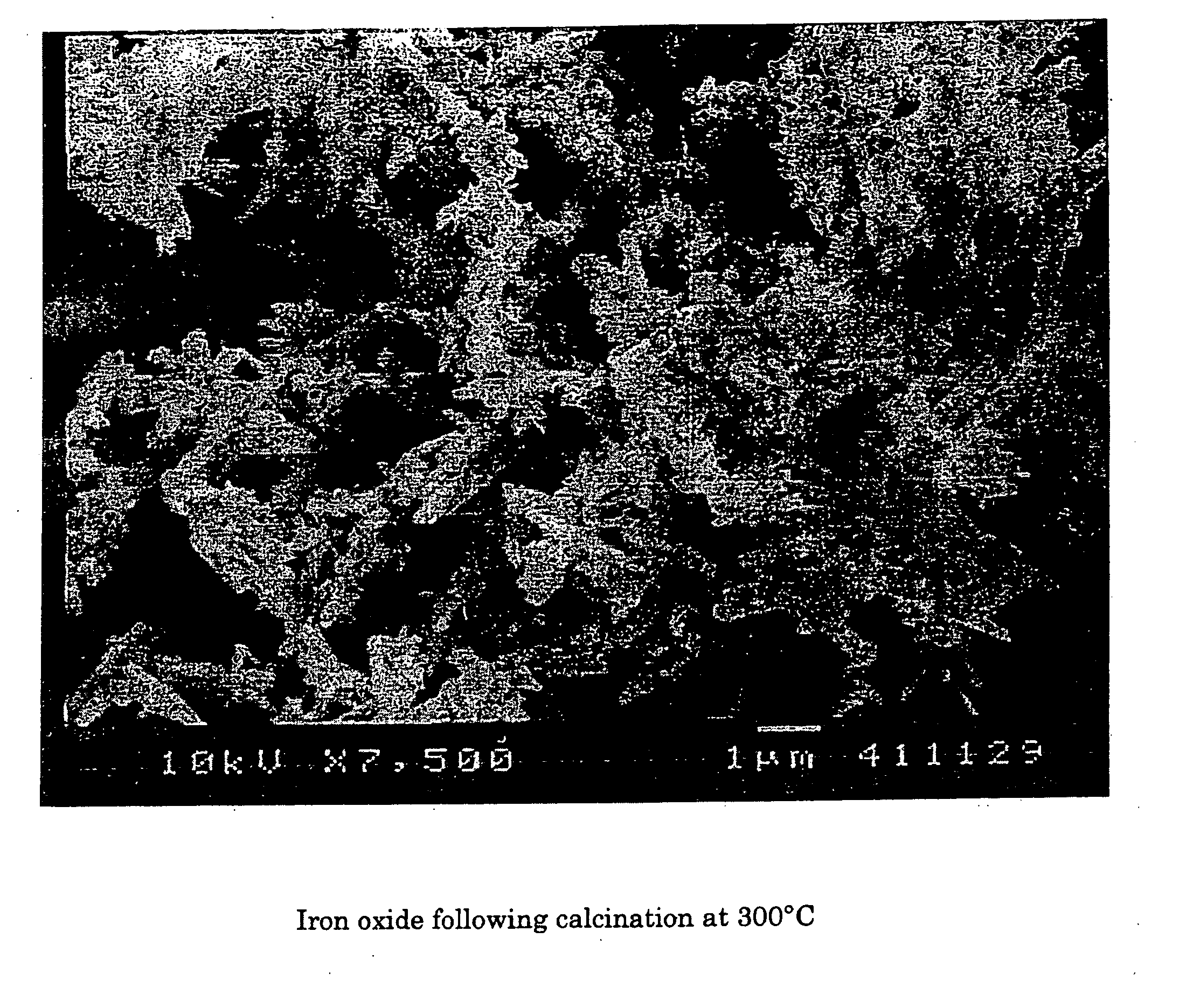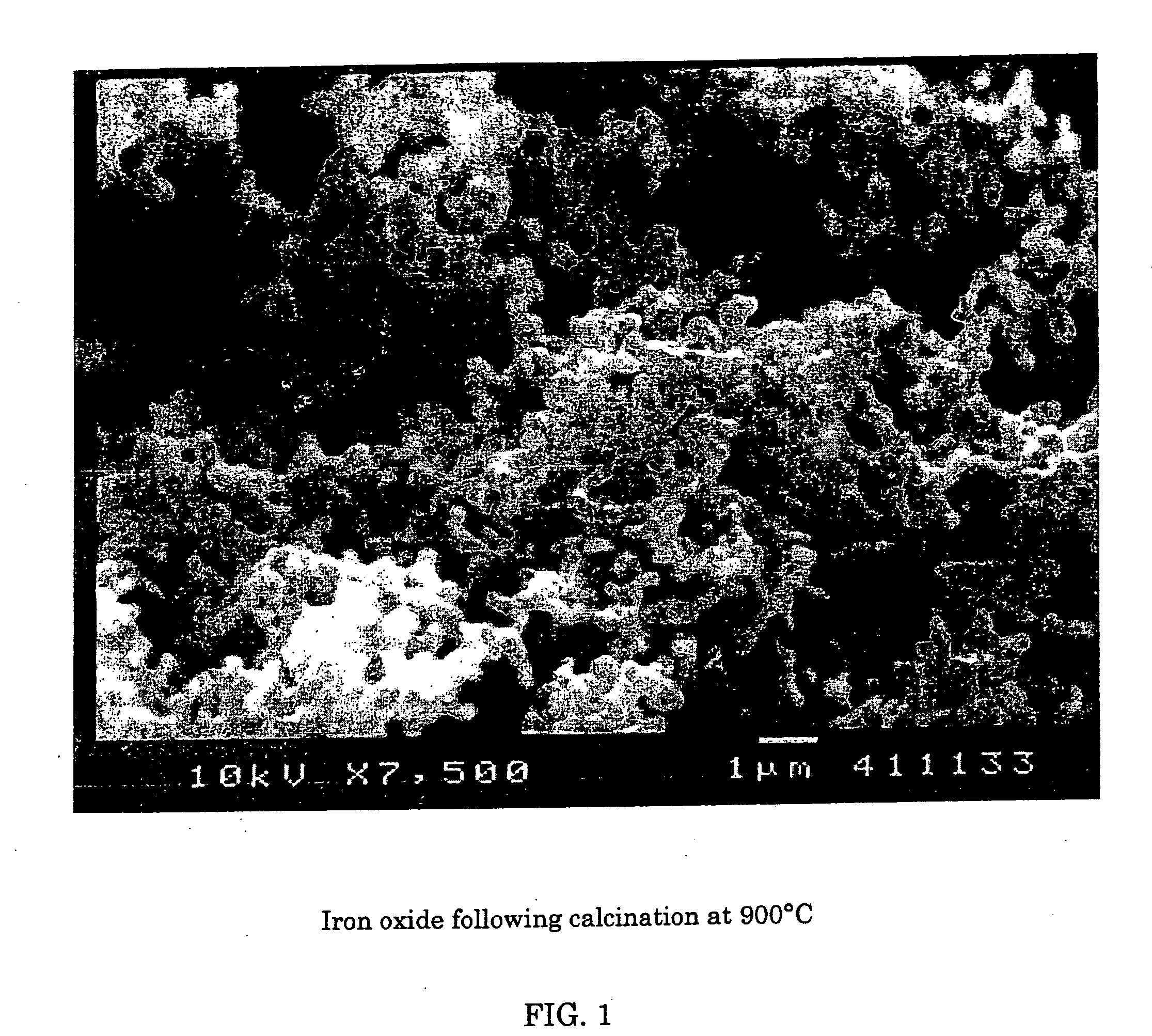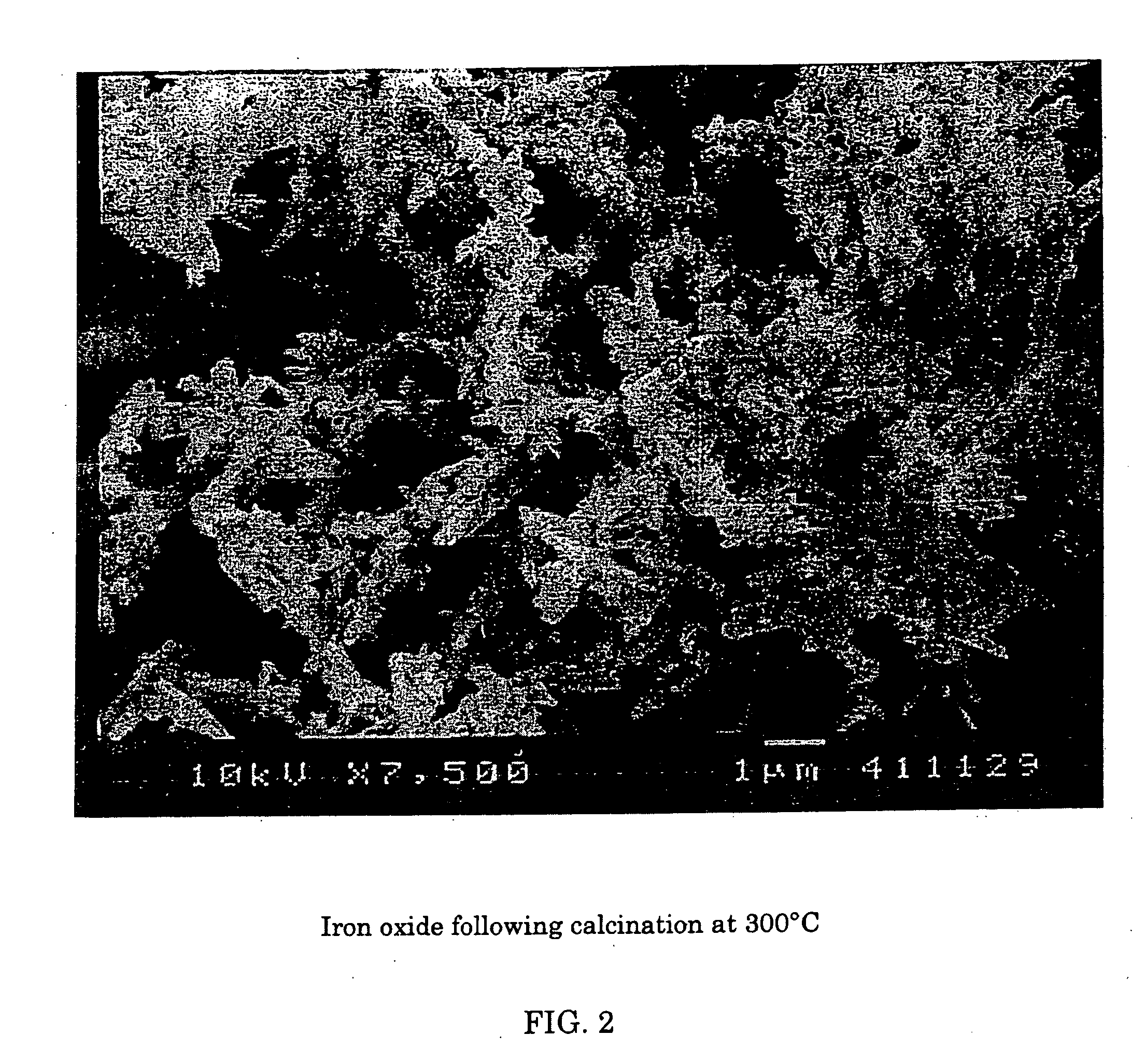Low sulfur red iron oxide useful as a catalyst or catalyst component and a process for making low sulfur red iron oxide
a technology of low sulfur red iron oxide and catalyst components, which is applied in the direction of iron compounds, metal/metal-oxide/metal-hydroxide catalysts, physical/chemical process catalysts, etc., can solve the problems of limiting the quantity of iron oxide that can be used, chloride presence, and major differences in usefulness of catalysts or catalyst components, so as to achieve easy and inexpensive process and enhance the effect of properties
- Summary
- Abstract
- Description
- Claims
- Application Information
AI Technical Summary
Benefits of technology
Problems solved by technology
Method used
Image
Examples
example i
[0054] In this Example, the following steps are used to illustrate the invention herein.
[0055] Yellow iron oxide produced by a precipitation process was washed with water and was tested for sulfur and chloride. The same material was further washed at an alkali pH and re-tested for sulfur content before being calcined at 300° C. for 120 minutes. Following calcination, the red iron oxide that was formed was washed to a pH at, or above, its iso-electric point before being dried. It was then re-tested for sulfur and chloride.
[0056] The washing process consists of producing a 10% slurry of iron oxide before addition of an alkali. In this example, potassium carbonate was used but equally other alkalis such as sodium hydroxide or ammonium hydroxide could be used. The pH of the slurry was raised to the desired level and the mix agitated for 60 minutes. This mix time can be less than 60 minutes but should not be less than about 15 minutes.
Yellowpost alkaliGentle Calcined redAnalysisCrude...
example ii
[0058] In this Example, the following illustrates the importance of calcination temperature to particle integrity.
[0059] Two samples of yellow iron oxide, produced by a precipitation process, were well washed with water, and then calcined at 900° C. and 950° C. respectively. Following calcination, the red iron oxide that was formed was tested for total sulfur content.
Analysis900° C.950° C.Total Sulfur (%)0.0290.026SSA (m2 / g)2.3not measuredParticle deformationYesYes% less than 10 microns85not measured
Discussion of Results:
[0060] There is clear evidence that washing the yellow iron oxide, no matter how vigorous or to what pH, will not remove sulfur contained within the core of the crystal itself.
[0061] Using our invention, its speculated that the use of low temperature calcination substantially increases the surface area of the particle, thereby allowing the second wash to penetrate deep into the crystal structure. It is this mechanism that is also likely to promote increased re...
example iii
[0063] Using scanning electron microscopy, two photos were taken of samples of red iron oxide. FIG. 1 shows the deformed or nodular shape obtained using a prior art process of calcination of iron oxide at 900° C. FIG. 2 shows red iron oxide made using the instant invention showing the more regular needle like acicular shape obtained.
Discussion of Results:
[0064] It is clear that, whereas high temperature calcination may substantially reduce sulfur, there is massive particle deformation associated with this removal.
PUM
| Property | Measurement | Unit |
|---|---|---|
| temperature | aaaaa | aaaaa |
| particle size | aaaaa | aaaaa |
| particle size | aaaaa | aaaaa |
Abstract
Description
Claims
Application Information
 Login to View More
Login to View More - R&D
- Intellectual Property
- Life Sciences
- Materials
- Tech Scout
- Unparalleled Data Quality
- Higher Quality Content
- 60% Fewer Hallucinations
Browse by: Latest US Patents, China's latest patents, Technical Efficacy Thesaurus, Application Domain, Technology Topic, Popular Technical Reports.
© 2025 PatSnap. All rights reserved.Legal|Privacy policy|Modern Slavery Act Transparency Statement|Sitemap|About US| Contact US: help@patsnap.com



